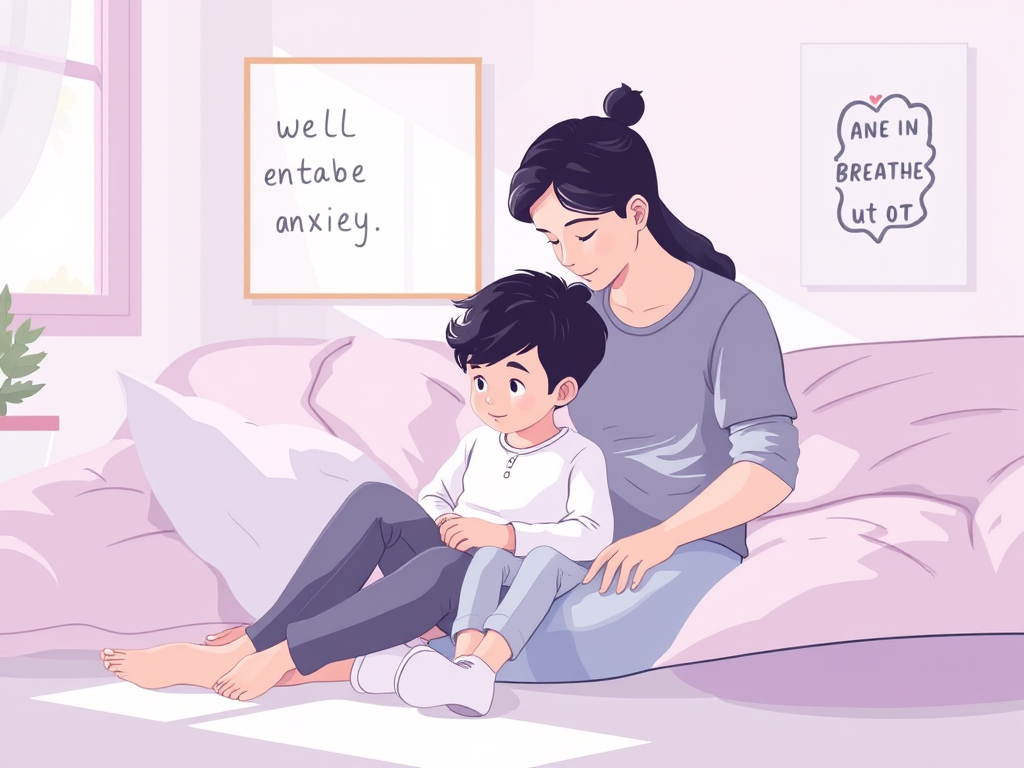Anxiety isn’t a quiet thing in our home.
It’s not hidden behind closed doors or swept under the rug.
We talk about mental health openly — because in this family, it’s not taboo. It’s real. It’s personal.
As a mom who lives with severe anxiety and panic attacks, I made a promise to myself: my children would never feel ashamed or confused about what they’re feeling inside. So we talk. Even when it’s hard. Especially when it’s hard.
Supporting a Child Through Panic Attacks
My 13-year-old experiences panic attacks that stop her in her tracks — chest tightness, racing thoughts, tears, and fear that something is terribly wrong. I’ve seen her clutch her chest and cry, “I can’t breathe.”
I’ve been there too.
In those moments, I don’t try to fix her. I sit with her.
We breathe together:
- Inhale for 4 seconds
- Hold for 4 seconds
- Exhale for 6 seconds
Over and over, until the panic eases.
This is how we manage anxiety as a family. This is what it looks like — connection, calm, and compassion.
Teaching Kids How to Cope with Anxiety
We’re not just helping our teen — even our youngest is learning.
My 4-year-old doesn’t fully understand the word “anxiety,” but she knows how to breathe in and out when someone’s upset. She’s seen it in action. Now, she’ll walk up and say, “Breathe with me,” to her older siblings when they’re frustrated.
She’s learning early what most of us didn’t learn until adulthood —
your emotions matter, and you’re not alone.
Why Talking About Mental Health Matters in Parenting
Breaking the mental health stigma starts at home. In our house, we use words like:
- Triggered
- Overwhelmed
- Calm down space
- Grounding
- Anxiety attack
We don’t say “stop crying.” We don’t say “you’re being dramatic.”
We validate, support, and walk through it together.
How to Start Mental Health Conversations With Your Kids
If you’re not sure where to begin, here’s what’s helped us:
- Be honest — Let them know it’s okay to feel anxious or scared.
- Share your own experience (in age-appropriate ways).
- Practice breathing exercises as a family — even when no one is anxious.
- Create a calm corner or safe space where kids can retreat and reset.
- Use children’s books or videos to explain what anxiety feels like.
- Normalize mental health days the same way we do sick days.
We Get Through Anxiety Together — One Breath at a Time
I won’t pretend it’s easy. Some days I feel like I’m barely hanging on. But even in the mess, I know this matters. Talking about anxiety with my kids has brought us closer. It’s helped them feel seen. And it’s helped me heal in ways I never expected.
In this home, we breathe together. We cry together.
And we show each other — you don’t have to go through anxiety alone.
💬 Let’s Talk About It… Together
If you’re a parent navigating anxiety — yours, your child’s, or both — you are not alone. This is hard, but you’re doing the best you can. And that is enough.
✨ Want extra support and free calming tools?
Download my free Peace Over Panic Digital Journal and Anxiety Tracker — created from our real life, with love, for moms just like you.
👉 Grab your free copy here
✨ Includes daily check-ins, weekly reflections, and breathing tools for tough moments.
And if this post resonated with you, drop a comment, share it with a friend, or just breathe with me in spirit.
We’re breaking the stigma, one breath and one honest conversation at a time.
With love,
Shanice – Anxiety Momster
